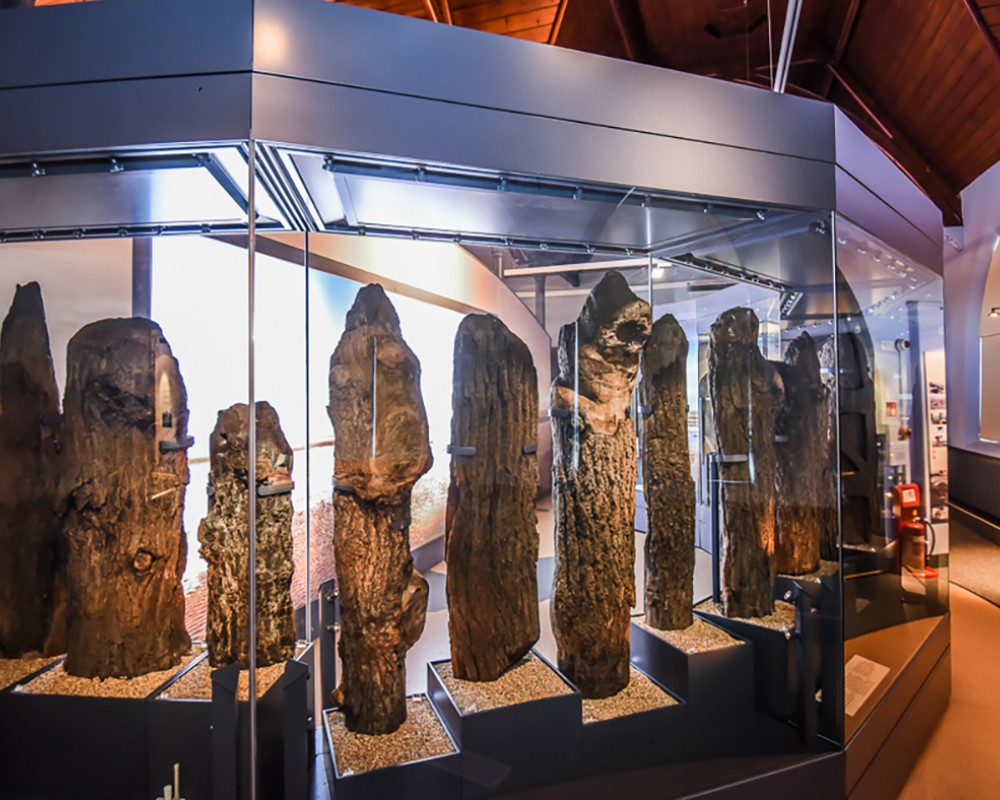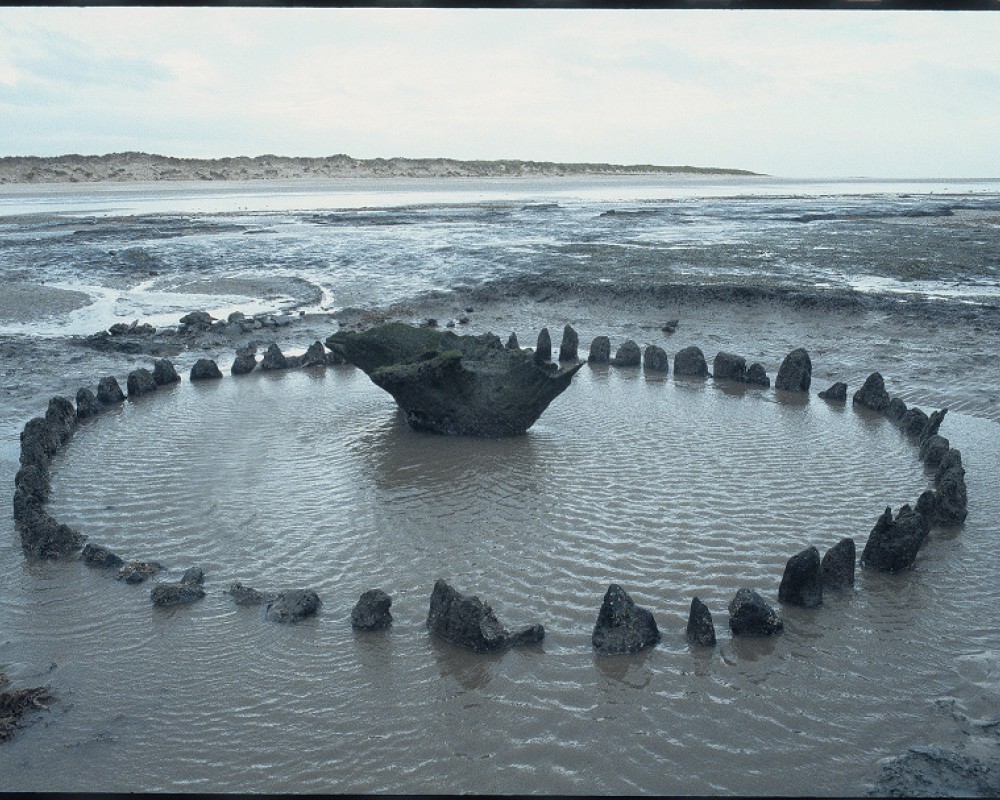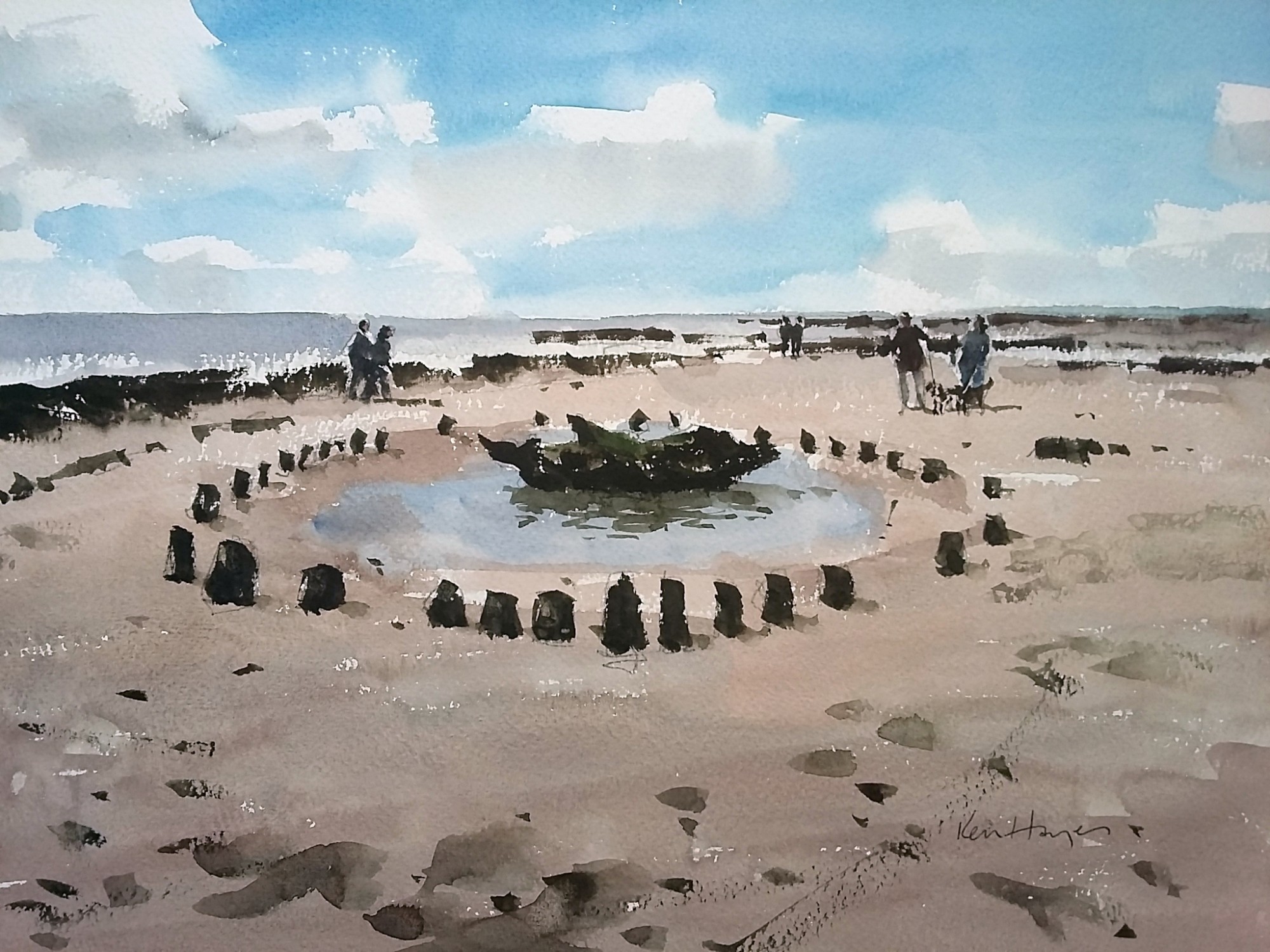
History on Holme Beach
Since its extraordinary discovery in 1998, Seahenge has been a source of intrigue, with its subsequent excavation sparking curiosity and controversy.
Originally buried in the shifting sands of the tranquil beach at Holme- next-the-Sea, Seahenge was a monument constructed over 4000 years ago, during the Early Bronze Age.
Comprising a tree stump buried upside-down and surrounded by a circle of 55 timber posts, it was an intriguing sight to behold. The purpose of the monument’s creation is still not entirely clear, with the presiding theory being that it served to commemorate the death of an important member of a local tribe.
Another plausible theory suggests the structure could have been an ancient astronomical calendar, used to mark both the Midwinter sunset and Midsummer sunrise.
Through the use of radiocarbon dating and dendrochronology (the study of tree growth rings), it was found that Seahenge was constructed during either the spring or summer of 2049 BC. It’s estimated that as many as 50 to 80 people took part in assembling the astounding monument. Although never confirmed where this community actually lived, it is thought that they hailed from a number of potential settlement sites in the Holme area.
Studies of the timbers and central stump revealed that they were made from nearby oak trees; markings made on the timber indicated that at least 51 bronze axes were used to fell and cut the wood. Further analysis of the central stump revealed that it had been dragged to the site using rope crafted from honeysuckle.
Shortly after the unearthing of Seahenge, a second timber circle was discovered and dubbed ‘Holme II’. This enthralling monument comprises a ring of wooden posts that surrounds two large logs on the ground. Although studied, it was never excavated and remains at Holme Beach to this day. Closer inspection of the ancient wonder showed depressions on the central logs, suggesting that an object was laid across them. If the theory holds true that Seahenge and Holme II served as memorials, these markings on the central logs could very well have been made by a coffin being placed upon them.
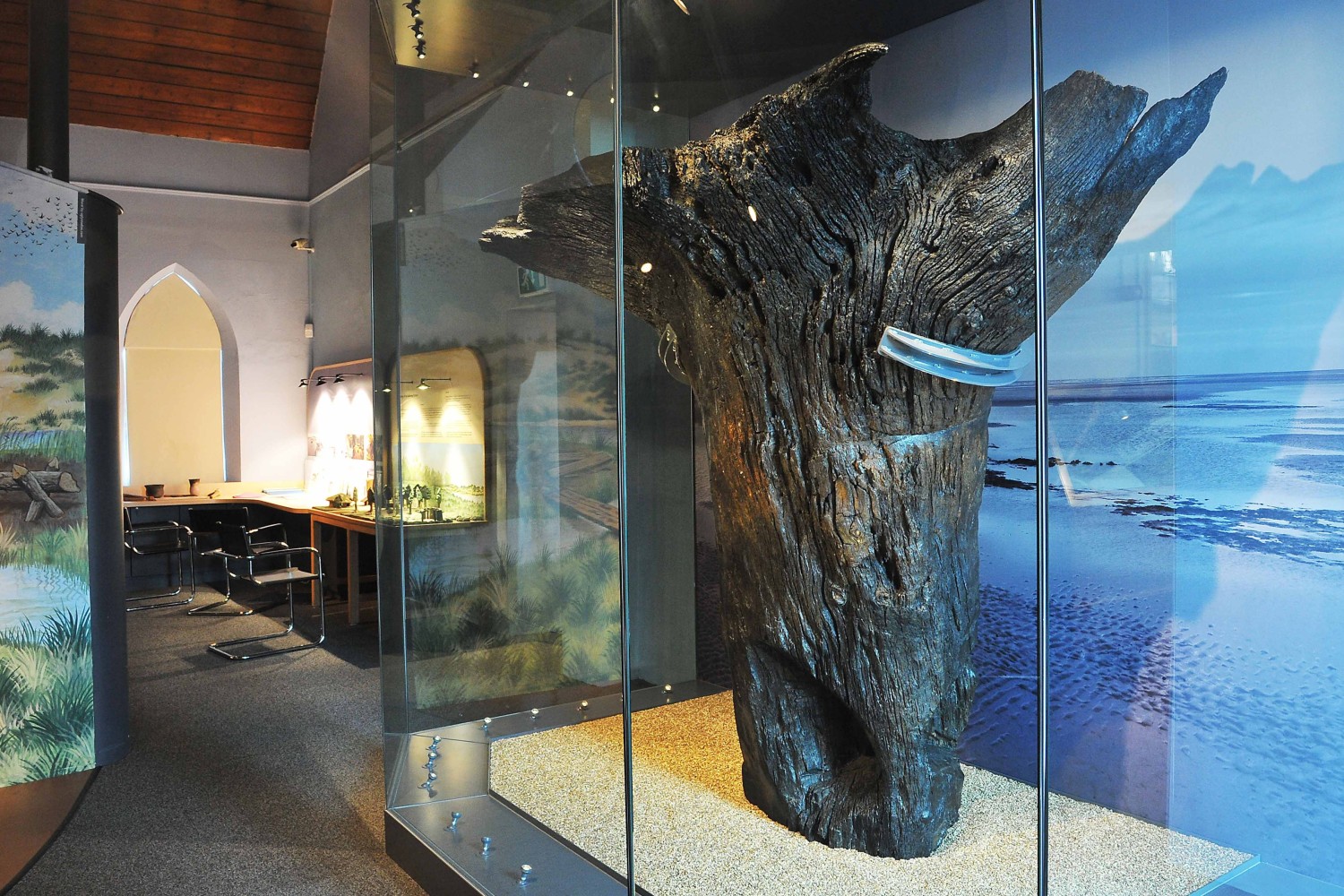
PICTURES: © NORFOLK MUSEUMS SERVICE (LYNN MUSEUM, KING’S LYNN) Officially known as Holme I but widely referred to as ‘Seahenge’, the 4,000-year-old timber circle was revealed by the shifting sands of Holme-next-the-Sea beach in 1998. The monument was excavated the following year as part of a controversial preservation project, eventually making its way to Lynn Museum for visitors to admire.
In 1999, due to growing concerns about the timbers, the English Heritage Trust funded the excavation of Seahenge so that it could be preserved.
Carbon dating later revealed that Holme II was also constructed in 2049 BC, which proved to be a remarkable discovery; this is currently the only known case of two monuments being built at the same time in ancient British history.
Holme Beach was a saltmarsh at the time Seahenge was constructed, so the timbers would’ve been carefully positioned in an area protected by mudflats and sand dunes. However, over the past 3000 years, coastal erosion transformed the marsh landscape into a beach. As the sea began to move further inland, the tides and storms gradually wore away the protective layers of peat beds that sealed the timbers and central stump, leading to damage.
In 1999, due to growing concerns about the timbers, the English Heritage Trust funded the excavation of Seahenge so that it could be preserved. This decision caused notable controversy and, as archaeologists began work, they had to contend with frequent protests that delayed the excavation process.
Many locals were upset that they had not been consulted beforehand and were unaware that the reason for excavation was to prevent further damage to the timbers from the sea. Some of those in opposition also felt the monument would attract tourists
to Norfolk, particularly to Holme-next- the-Sea, so the village would stand to gain financially from keeping Seahenge. There was even objection from druids, citing religious reasons for not excavating the monument. However, the Norfolk Wildlife Trust
were concerned; the timbers of Seahenge lay on the border of Holme Dunes Nature Reserve and they felt a surge in visitors to the site would disturb the wildlife.
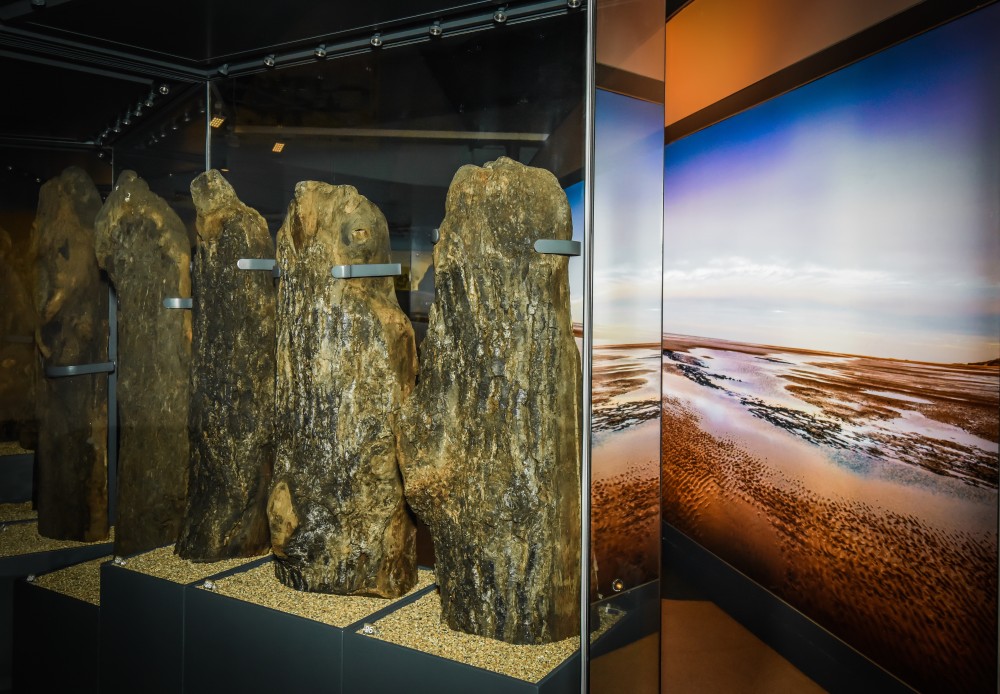
The excavation proceeded; when the timbers were extracted from the sand, it was noted that they had already started to decay due to regular exposure to seawater. The timbers and central stump were taken to the Bronze Age Centre at the Flag Fen Archaeology Park, near Peterborough, where they were submerged in freshwater tanks to clean off the mud and salts. After being studied they were transported to the Mary Rose Trust in Portsmouth, where further cleaning was carried out to conserve the astounding wooden artefacts. They were then immersed in polyethylene glycol (a special type of wax) which reinforced the cell structure of the wood. The final step in preservation was vacuum freeze drying the timbers, extracting any remaining water to prevent further decay.
In 2008, almost a decade later, Norfolk saw the return of its iconic Bronze Age monument. Half of the timber posts and the central stump were brought to Lynn Museum and have since been permanently on display in a dedicated exhibit. Thanks to the efforts to preserve the millennia old timbers, curious visitors, budding historians and future generations can now take the time to connect with an incredible piece of their ancient history.
